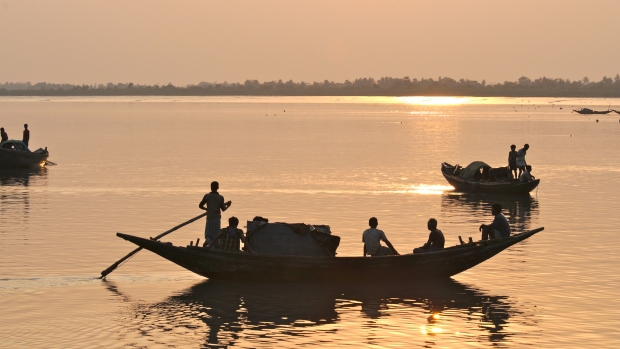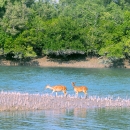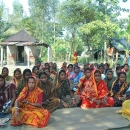Grants :: Large Grant Facilities :: Alternative livelihood options for vulnerable mangrove resources in the Sundarbans Tiger Reserve
Alternative livelihood options for vulnerable mangrove resources in the Sundarbans Tiger Reserve

Fishing at sunset in the Sundarbans, Sundarbans, West Bengal, India © Pradeep Vyas, 2009
Objectives
The main objective of the project is to promote alternative livelihood options to save mangroves from the biotic interference of key mangrove user groups
The immediate objectives are:
1. Improved institutional and organizational arrangements for mangrove and wildlife conservation and protection developed through capacity building for Forest Department staff and key stakeholders in fringe villages.
2. Improved environmental biodiversity and increased livelihood security through reduced dependency of local people on the forest resources by diversification into alternative livelihood options and improved disaster preparedness and management.
3. Improved scientific monitoring for mangroves and project management.
Background
The purpose of this project is to reduce the pressure on the forest's natural resources through the provision of alternative livelihoods and income generating options and seeks to pilot disaster preparedness initiatives. The project aims to reducte the risk of damage to lives and livelihoods from flooding and other related natural disasters that the area is prone to. Institutional and organizational building strengthening is also a key component of the project.
Target beneficiaries
Beneficiaries include people inhabiting the fringe villages by the Sundarban Tiger Reserve, and people living in Jharkhali area of the adjoining south 24 Pargana (South) Division. The main target groups will be the poorer sectors of these villages that rely heavily on the mangrove resources for their day-to-day needs and livelihoods.
Outputs
Output 1: Strengthened organizational capacity of eco-development committees and forest department staff to plan, implement and monitori conservation and livelihood development.
Output 2: Improved livelihood security through disaster preparedness and mitigation in disaster prone fringe villages.
Output 3: Improved monitoring and management of mangroves in the Sundarbans
Country
Location
Sundarban Biosphere Reserve, West Bengal, India
Topic
Duration
16th Nov 2011 to 15th Nov 2013
MFF Grant Amount
USD 299,600
Implementing Partner
Mr. Pradeep Vyas
Director
Sundarbans Biosphere Reserve, West Bengal Forest Department
pradeepvyas19@gmail.com




